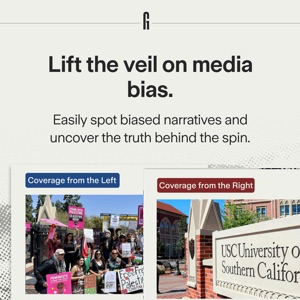In a shocking turn of events that economists, cashiers, and candy lovers all saw coming, America’s spiraling inflation has driven citizens to a new currency: candy bars. Yes, in a time when the U.S. dollar is practically indistinguishable from Monopoly money, a small but mighty market has emerged in gas station snack aisles, where savvy locals are trading their hard-earned cash for miniature doses of chocolate and nougat.
“Honestly, the dollar just isn’t what it used to be,” says Chad Lambert, a weary father of three, who stood in line at a 7-Eleven clutching a Reese’s Peanut Butter Cup in one hand and a twenty-dollar bill in the other. “I came in with cash hoping to fill my tank, but all I could afford was this Fun Size candy bar. I figured, better Reese’s than regret.”
America’s New Gold Standard: Snickers Bars
With inflation pushing candy prices through the roof, certain gas station treats are now being referred to as “high-value assets.” While the government frantically attempts to address skyrocketing prices, the gas station economy has turned into a bizarre mix of Wall Street speculation and the world’s most chaotic bake sale.
Take Snickers bars, for instance. “Snickers has emerged as the clear gold standard in the new candy economy,” says Jordan Whitaker, a “snackonomist” who consults on high-value chocolate investments. “It’s got protein, carbohydrates, and enough sugar to keep you going. It’s not just a snack; it’s a stable, reliable commodity.”
Rumor has it that major financial institutions are even considering minting a “Snickers-backed currency” to stabilize the economy. Meanwhile, local candy traders have seen their fortunes soar, with some parking-lot entrepreneurs snapping up Reese’s Cups and M&Ms at bulk prices and reselling them at double the value to desperate gas station shoppers.
But it’s not just Snickers that’s enjoying the candy boom. Other “solid assets” include Kit Kats, Twix, and the occasional Milky Way bar for the budget-conscious. Prices of gummy bears, once considered low-end treats, have also skyrocketed, forcing many snack investors to diversify their portfolios. “I’ve got Smarties and Pixy Stix as backups,” says local candy baron Benny “The Snack Broker” Morales, “but my real retirement plan is Twix.”
Failed Government Intervention and New Regulations
As this candy-fueled inflation spirals out of control, the government has struggled to keep up. In an attempt to curb candy inflation, the Federal Reserve announced a controversial “two-bar-per-person” policy for gas station candy aisles, only to see demand surge to record highs. Treasury Secretary Karen Monroe addressed the nation last Thursday in a press conference, awkwardly holding up a Payday bar and reassuring the public that “the situation is under control.”
Her statement came just hours before Payday prices doubled.
“It’s wild out here,” said Bethany Green, a long-time Shell station employee who has witnessed the transformation of her snack aisle into a full-blown currency exchange. “Yesterday, some guy tried to haggle with me—offering me a $10 bill for a Snickers. I told him, ‘Sir, I don’t make the rules. That Snickers is worth at least $15 now.’ He walked out mumbling about ‘selling his daughter’s Girl Scout cookies’ to afford it.”
Despite new limits and efforts to control the chaos, underground snack markets have sprung up across the country. These so-called “candy exchanges” operate in parking lots and side streets, where the only rule is: bring cash or candy, and leave your sense of economic dignity at home.
“You can’t find a reasonably priced Snickers anywhere,” laments local grandmother and candy-smuggling enthusiast Linda Torres. “I saw a guy paying in quarters for a single Reese’s Mini the other day. I could only shake my head.”
Social Media Fandom and the Emergence of Candy Influencers
Where there’s chaos, there’s clout. Influencers have flocked to this candy crisis, churning out content on everything from “smart candy swaps” to “fun-size investments.” TikTok’s latest trend, #SnackStonks, has millions following accounts like @CandyBrokerChaz, who boasts a portfolio of Kit Kats and Almond Joys that he claims could buy a car by the end of the year. “If you’re not investing in candy, you’re missing out,” he says, holding up a Snickers like a stockbroker with a hot tip.
Meanwhile, financial “experts” are giving unsolicited advice to everyday Americans on “affordable candy alternatives” and budget-snack solutions. On a recent episode of Good Morning America, self-proclaimed financial guru Molly Wells advised viewers to “start early by investing in Smarties or Dum Dums, even if they’re not ideal assets. Remember, diversify. A mixed portfolio of chocolates and chewy fruit-based candies is your best bet.”
Sweeten Your Future or Regret It
With the U.S. economy in a sugar spiral, candy bars are no longer just comfort food—they’re your best shot at financial stability. Experts urge Americans to prepare for the candy crunch by stocking up on Halloween clearance sales or, for the adventurous, buying bulk from Costco and Sam’s Club.
“Don’t wait until it’s too late,” warns Whitaker, the snackonomist. “At this rate, a Snickers will soon hold more weight than a diploma, and your 401(k) will be nothing more than a pile of leftover quarters.”
And for those of you still hoping the dollar will rebound? “Better keep dreaming,” says Bethany at the Shell station. “Meanwhile, I’ve got two Almond Joys left. Make me an offer.”
So, America, start budgeting. Raid the snack aisle and diversify your assets. Because in today’s economy, it’s not about earning a sweet reward; it’s about holding onto one before the next price hike.


